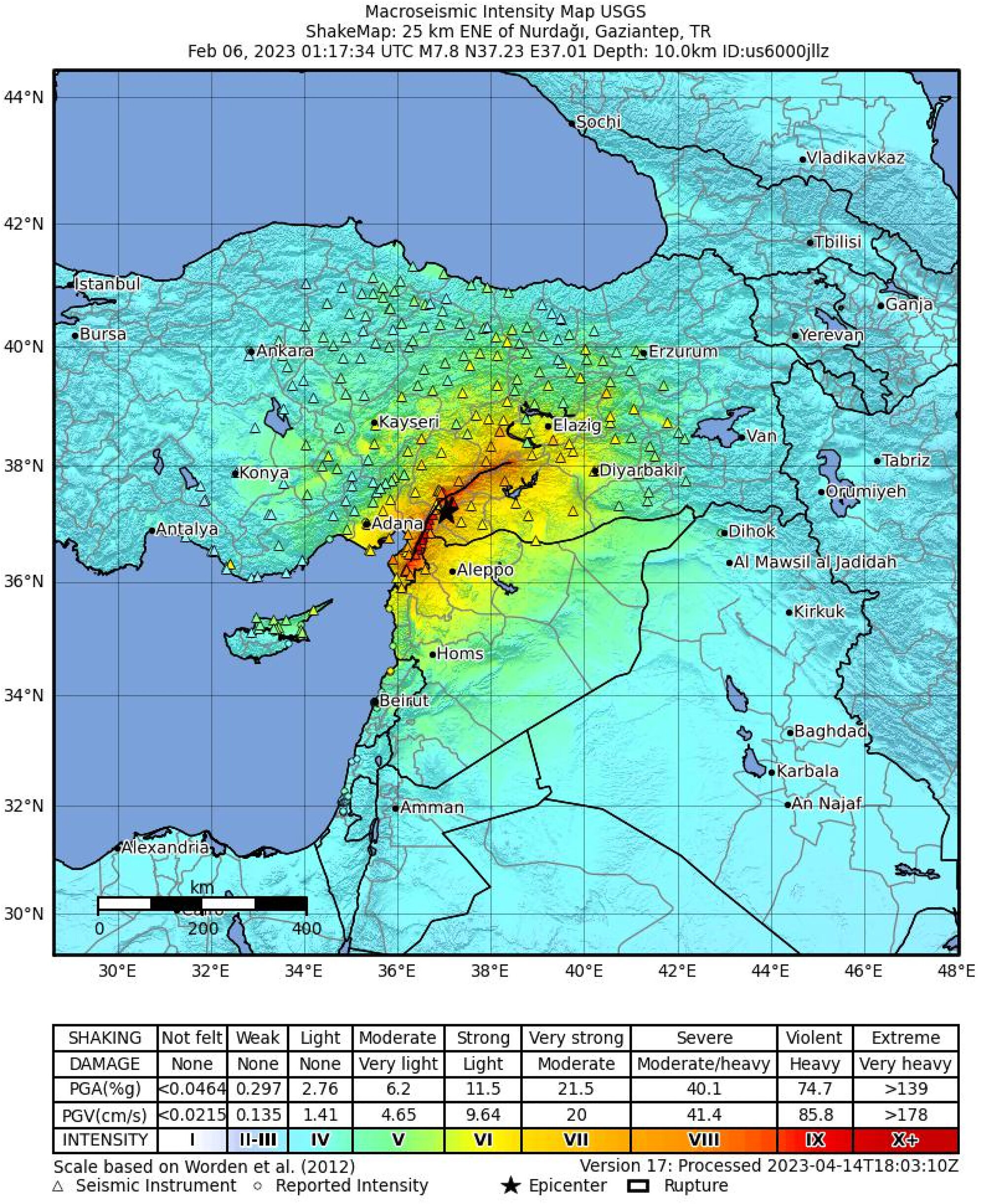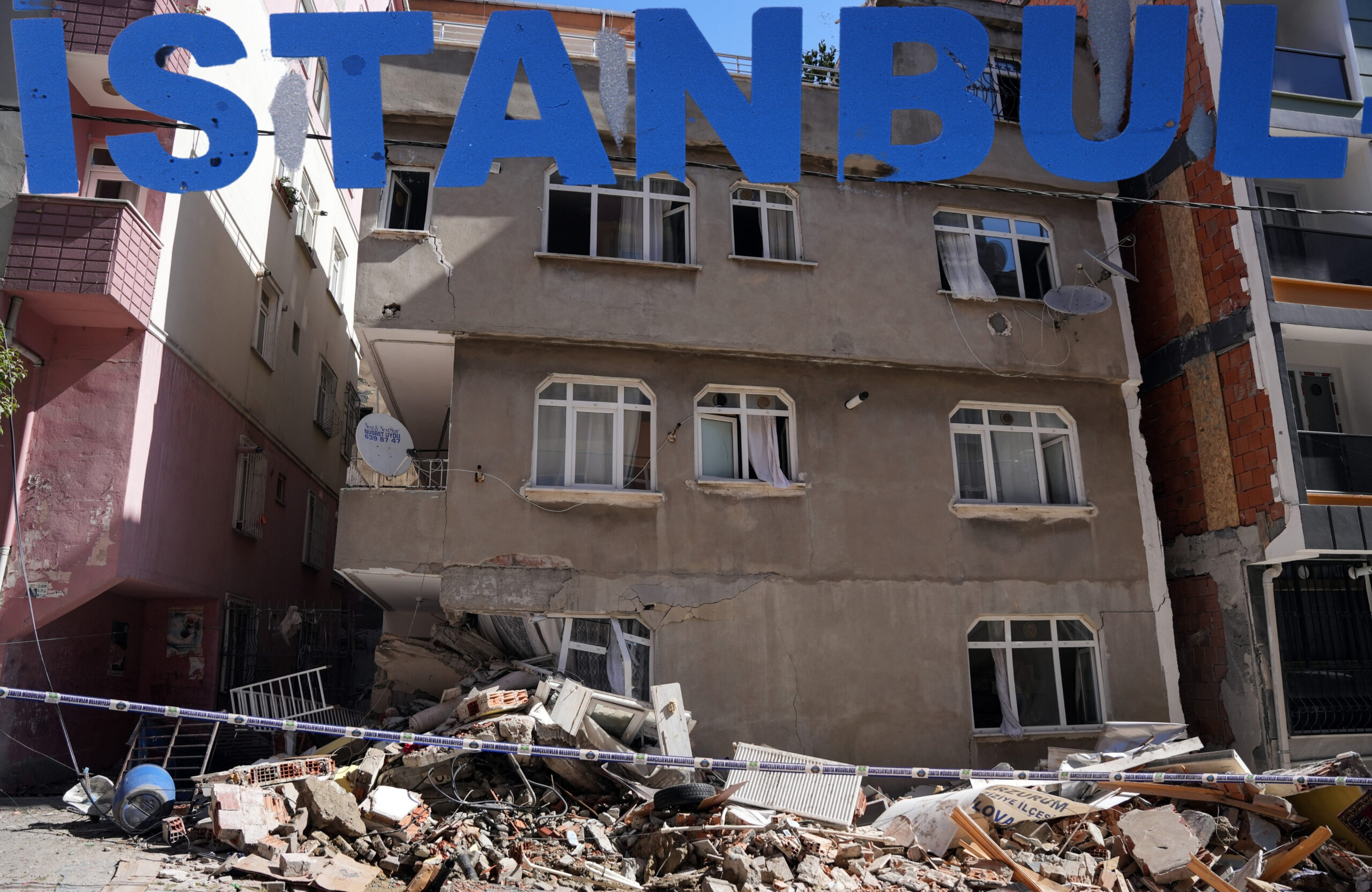Satellite data uncover anomalies weeks before 2023 Türkiye earthquake
 The intensity map and geographic location of the 2023 Türkiye earthquake, a black star indicates the earthquake epicenter, May, 2024 (Figure by Journal of Applied Geodesy)
The intensity map and geographic location of the 2023 Türkiye earthquake, a black star indicates the earthquake epicenter, May, 2024 (Figure by Journal of Applied Geodesy)
Recent research reveals that earthquakes may exhibit detectable anomalies in the ground, atmosphere, and ionosphere up to 19 days before they occur.
This breakthrough, published in the Journal of Applied Geodesy, could revolutionize early warning systems and significantly mitigate the devastation caused by earthquakes.
Anomalies detected before 2023 Türkiye earthquake
The study, led by professor Mehdi Akhoondzadeh from the University of Tehran, utilized satellite data to investigate the lead-up to the earthquakes that struck near the Türkiye-Syria border on Feb. 6, 2023.
By analyzing data from the Chinese seismo-electromagnetic satellite (CSES-01) and the European Space Agency’s Swarm satellite mission, Akhoondzadeh identified several anomalies prior to the earthquakes.
How did ground and atmospheric changes signal earthquake in Türkiye?
The research team observed significant anomalies in land surface temperature in the earthquake region as early as 12 to 19 days before the earthquakes.
Additional atmospheric anomalies, such as changes in water vapor, methane levels, ozone, and carbon monoxide, became apparent five to 10 days before the seismic events.
These findings suggest that these anomalies could serve as early indicators of an impending earthquake in Türkiye.
Ionosphere’s role in predicting earthquake
Striking anomalies were also detected in the ionosphere, including variations in electron density and electron temperature, occurring one to five days before the earthquakes.
The study proposes that these signals originated from the ground and propagated upward through the atmosphere to the ionosphere, indicating a clear pattern of earthquake precursors specific to the Türkiye-Syria earthquake.
Implications for early warning systems
These findings indicate that monitoring a combination of physical and chemical parameters using satellites could enhance the accuracy of earthquake early warning systems in Türkiye.
By reducing the uncertainty in detecting real anomalies, such systems could potentially offer more reliable alerts with fewer false warnings, providing critical time for preparations and evacuations.
What’s next for earthquake prediction research in Türkiye?
Professor Akhoondzadeh emphasized the importance of studying anomalies associated with multiple earthquake precursors to decrease uncertainty and improve early warning systems.
Further research on different earthquakes in Türkiye and other geographical regions will be essential to fully understand these patterns and refine predictive models.
This groundbreaking study highlights the potential of satellite technology to detect early signs of earthquakes, offering a promising avenue for developing more effective early warning systems in Türkiye.
As researchers continue to analyze seismic data with advanced satellite technology, the possibility of predicting earthquakes with greater precision comes closer to reality.
For more details, refer to the study published in the Journal of Applied Geodesy: [DOI: 10.1515/jag-2024-0024](https://earthquake.usgs.gov/earthquakes).


